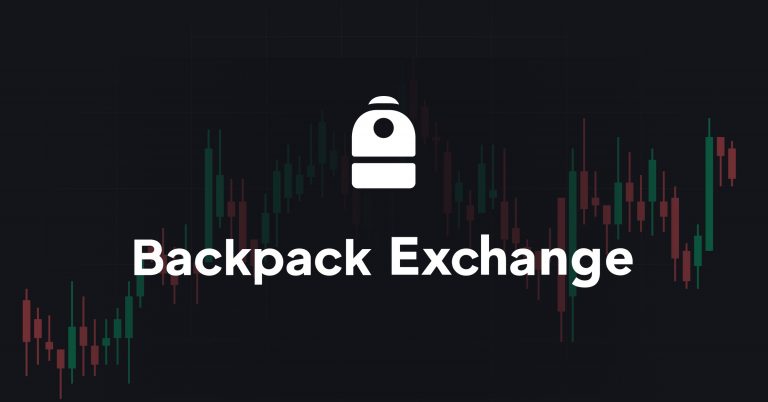
Backpack Exchange has confirmed that Season 2 of its points program will start on July 3, 2025, as announced through various posts on X. This follows the success of Season 1, which began on March 21, 2025, and ran for 10 weeks, rewarding users with points based on their activity on the exchange. Season 2 is expected to expand access to European users and may introduce new ways to earn points, potentially through the Backpack Vault, similar to Hyperliquid’s HLP system, allowing users to farm points without trading futures.
The program aims to incentivize user engagement and platform growth, with points distributed weekly based on activity, though specific criteria remain intentionally opaque. The launch of Backpack Exchange’s Season 2 points program on July 3, 2025, has several implications for the platform, its users, and the broader crypto ecosystem, particularly when considering the potential divide in user activity. Season 2’s points program, like Season 1, rewards users based on their activity (e.g., trading volume, wallet interactions, or potential new features like Backpack Vault).
This gamified approach encourages users to trade more frequently, deposit assets, and engage with the platform’s ecosystem, driving trading volume and liquidity. Season 1 saw Backpack Exchange achieve $27.5 billion in total volume during its beta phase, suggesting Season 2 could further boost these metrics. With the acquisition of FTX EU and plans to offer regulated perpetual futures in Europe starting Q1 2025, Season 2 may attract a broader user base, particularly in Europe. This could enhance Backpack’s global presence and competitiveness against exchanges like Binance or KuCoin.
Register for Tekedia Mini-MBA edition 19 (Feb 9 – May 2, 2026): big discounts for early bird.
Tekedia AI in Business Masterclass opens registrations.
Join Tekedia Capital Syndicate and co-invest in great global startups.
Register for Tekedia AI Lab: From Technical Design to Deployment (next edition begins Jan 24 2026).
The points system is widely speculated to be a precursor to a future token airdrop, similar to Hyperliquid’s model. This anticipation could drive speculative trading, as users aim to accumulate points for potential rewards, increasing platform activity but also market volatility. Points earned in Season 2 can be redeemed for benefits like discounted fees, exclusive promotions, or advanced trading features. The tiered ranking system (Bronze to Challenger) fosters a sense of prestige, incentivizing users to climb ranks for better perks.
Backpack’s unique offerings, such as interest-bearing futures and auto-lending, allow users to earn passive income alongside points, potentially attracting both active traders and long-term holders. This could differentiate Backpack from competitors like Binance, which require separate accounts for similar features. Backpack’s ecosystem, including its wallet and Mad Lads NFT collection, aligns with the growing SocialFi trend on Solana. Season 2 may introduce quests or rewards tied to SocialFi platforms, enabling users to monetize content or digital identities, further diversifying engagement opportunities.
Backpack’s use of cryptographic techniques (e.g., zero-knowledge proofs, Multi-Party Computation) and its Virtual Asset Service Provider (VASP) license from Dubai’s VARA enhance its reputation as a secure, regulated platform. Season 2’s expansion into Europe under MiCA regulations could solidify user trust, especially after the FTX collapse, in which Backpack lost 88% of its treasury. Starting May 12, 2025, Backpack will distribute funds to former FTX EU users, potentially integrating these users into Season 2’s points program. This could boost user acquisition but also create logistical challenges in managing payouts alongside new user onboarding.
The structure of Season 2’s points program, while designed to reward engagement, may exacerbate a divide between high-activity and low-activity users, creating both opportunities and challenges. Users with high trading volumes (e.g., >$5,000, as suggested for airdrop eligibility) or those engaging in futures and SocialFi features will likely earn more points and higher ranks (e.g., Platinum, Diamond, Challenger). These users benefit from lower fees (0.085% maker, 0.095% taker vs. industry average 0.1%), exclusive perks, and potentially larger airdrop allocations.
High-activity users drive significant trading volume, contributing to platform liquidity and visibility. Their participation in competitions (e.g., $60,000–$90,000 Volume and PnL rewards) further amplifies their impact, potentially skewing market dynamics toward their strategies. These users are more likely to leverage Backpack’s interest-bearing futures and cross-margined accounts, maximizing returns and consolidating their dominance in the points system.
The opaque criteria for earning points may disadvantage users with lower trading volumes or limited capital, as they struggle to compete with whales for higher ranks. The KYC process and learning curve for features like futures or SocialFi could further deter newcomers. Low-activity users may only achieve lower ranks (e.g., Bronze, Silver), restricting access to premium benefits. This could lead to a perception of inequity, where only high-volume traders reap significant rewards, potentially discouraging broader adoption.
While SocialFi features could appeal to retail users, the technical complexity of blockchain-based platforms and high Solana gas fees (despite being lower than Ethereum) may limit participation for those unfamiliar with DeFi or NFTs. Backpack’s intuitive interface and single cross-margined account simplify trading for newcomers, reducing the complexity seen in platforms like Binance. Season 2 could introduce quests or bonuses tailored to retail users, such as low-volume trading competitions or wallet-based tasks.
The Mad Lads NFT collection and SocialFi integration foster a sense of community, potentially bridging the gap by rewarding non-trading activities like content creation or platform referrals. As a Solana-based platform, Backpack’s success could bolster the Solana ecosystem, often compared to “Binance of Solana.” Season 2’s rewards may drive adoption of Solana-based assets (e.g., SOL/USDC, Mad Lads NFTs), increasing network activity and value.
By offering lower fees, interest-bearing futures, and a points system, Backpack challenges established exchanges. However, the user activity divide could limit its ability to compete with Binance or KuCoin if retail users feel marginalized. The promise of a valuable airdrop (potentially worth $5,000 for active users) could attract speculators, but low competition in Season 2 suggests an opportunity for early adopters. Long-term success depends on balancing rewards with sustainable platform growth to avoid a “pump-and-dump” scenario.
While Backpack’s points program incentivizes growth, the lack of transparency in point allocation criteria raises concerns about fairness. High-activity users may dominate rewards, potentially alienating retail users and creating a perception of exclusivity. Additionally, the speculative nature of airdrop-driven activity could lead to unsustainable trading volumes if not paired with genuine platform utility. Backpack must carefully design Season 2 to include low-barrier tasks and clear communication to ensure broad participation, especially as it expands into Europe and integrates FTX EU users.
Season 2’s launch on July 3, 2025, positions Backpack Exchange to drive user engagement, platform growth, and Solana’s ecosystem development. However, the user activity divide—between high-volume traders and retail users—could widen if rewards heavily favor whales. By leveraging its user-friendly design, SocialFi integration, and educational resources, Backpack can mitigate this divide, fostering inclusive growth.



